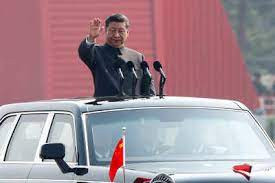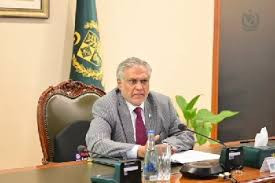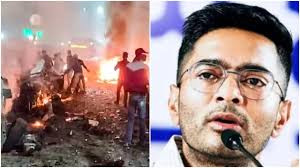West Asia Crisis Deepens: India Evacuates 110 Students from Tehran Amid Escalating Tensions
IIE DIGITAL DESK : The geopolitical tensions continue to spiral in West Asia, the Government of India has intensified its evacuation measures, successfully relocating 110 Indian students from Tehran, Iran’s capital. This operation, executed with precision and urgency, was undertaken amidst growing concerns over the safety of Indian nationals in the region, as hostilities between regional powers show no signs of abating.
The Ministry of External Affairs (MEA), in a statement released on Monday, confirmed the safe movement of the students out of Tehran. The operation is part of a broader and more comprehensive evacuation plan aimed at ensuring the security of Indian citizens residing in or visiting Iran and nearby conflict-prone areas.
Senior officials from the MEA have been closely monitoring the situation, maintaining continuous coordination with the Indian Embassy in Tehran. “The safety of our nationals abroad is of utmost priority,” said MEA spokesperson Randhir Jaiswal. “We have arranged for the movement of 110 Indian students from Tehran to safer locations, and we are continuing to assess and assist others in need of evacuation.”
The Indian Embassy in Iran has been operating a 24x7 helpline to provide assistance, update nationals about the latest security advisories, and facilitate movement in coordination with local Iranian authorities. Diplomatic sources indicate that India is also in touch with governments across the region to ensure Indian interests and communities are safeguarded as tensions increase.
The evacuation comes against the backdrop of mounting friction in the Gulf region, particularly between Israel and Iran, which has led to heightened military activity and uncertainty in Tehran. A series of developments over the past week—including drone attacks, airstrikes, and countermeasures—have raised alarm among foreign governments with citizens in the area.
Though the Indian government has not disclosed the exact destinations to which the students were relocated, sources indicate that the evacuation involved both road and air transfers, possibly to safer cities in neighboring countries or Indian military bases operating in the region. The students, most of whom were enrolled in medical and technical courses, had reportedly been growing anxious as the crisis deepened.
Parents and families back home expressed relief after receiving confirmation of the students’ safety. “We were extremely worried about our daughter in Tehran. We thank the government for acting quickly,” said a parent from Kerala, whose daughter is among those evacuated.
India’s proactive stance comes as part of its broader strategy to protect citizens during international crises. The MEA has carried out several large-scale evacuations in recent years, including “Operation Ganga” during the Ukraine-Russia war and “Vande Bharat Mission” during the COVID-19 pandemic.
Indian authorities have urged citizens to refrain from non-essential travel to Iran and the surrounding region. A fresh advisory issued late Sunday night reiterated this caution and asked Indian nationals already present in Iran to remain in touch with the embassy and avoid large public gatherings.
While there is no formal indication of an immediate threat to Indians in Iran beyond the capital, intelligence agencies continue to monitor the volatile situation closely. Defense and diplomatic channels are on high alert as fears of a broader regional conflict loom large.
With over 3,000 Indian nationals living across different cities in Iran, the Indian government is preparing for more evacuations if the crisis escalates. “We are ready to act at a moment’s notice. No Indian life will be left unprotected,” the MEA stated.
As the conflict evolves, India’s commitment to the safety and welfare of its diaspora once again comes into sharp focus, underscoring the strategic importance of timely intervention and diplomacy in times of international upheaval.
You might also like!
















